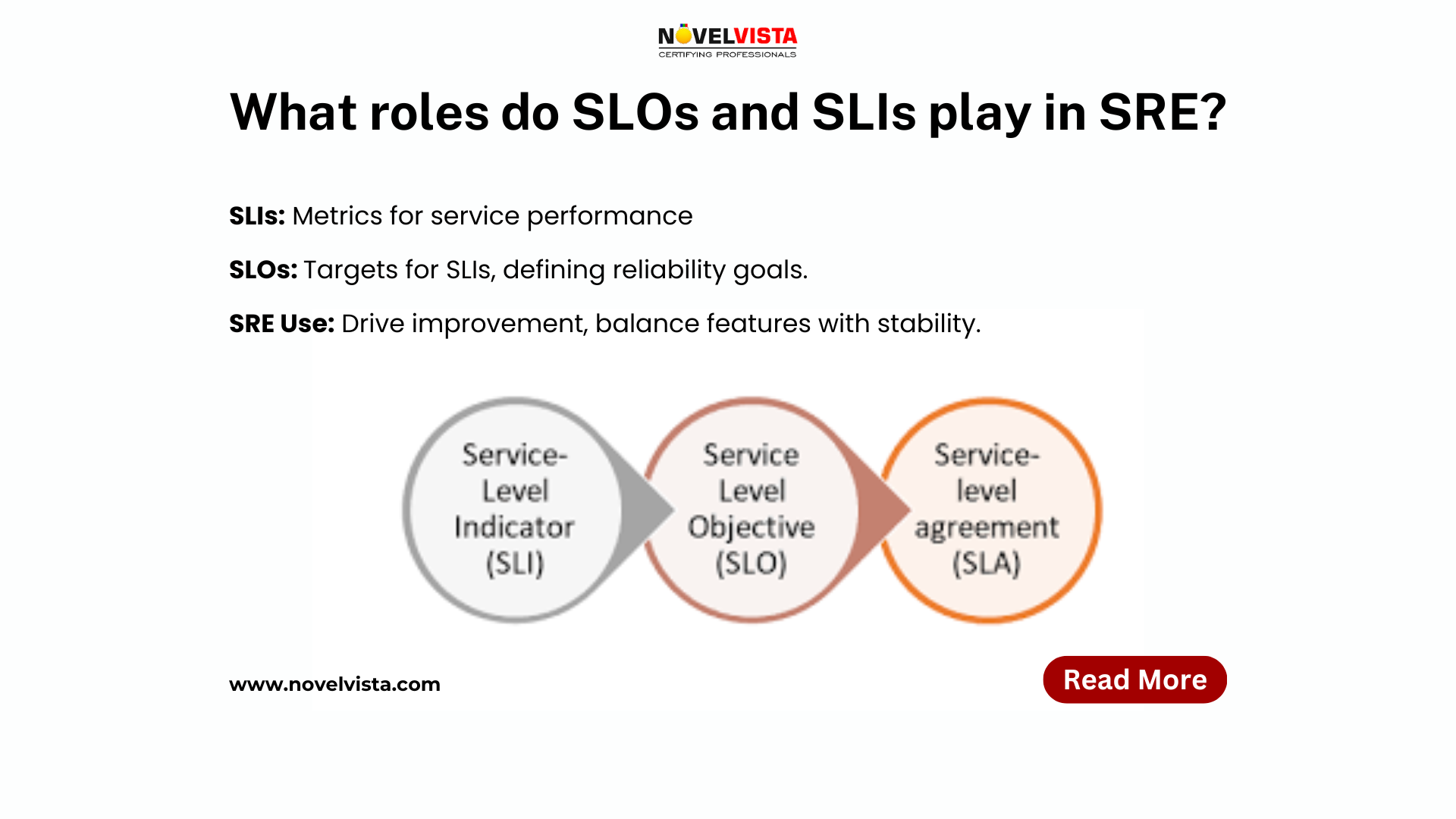In the rapidly evolving field of technology, the demand for reliable and efficient systems has never been higher. Site Reliability Engineering (SRE) emerges as a pivotal discipline that bridges the gap between software development and operations, ensuring that complex systems run smoothly and resiliently. A crucial aspect of SRE is its reliance on Service Level Objectives (SLOs) and Service Level Indicators (SLIs), metrics that are fundamental to its practice. This blog delves into how SLOs and SLIs play a critical role in SRE, highlighting their importance for professionals looking to deepen their expertise through SRE certification, training, and foundational courses.
Defining SLIs and SLOs
Before we explore their roles, let's define these key terms:
- Service Level Indicators (SLIs): These are quantifiable metrics that reflect the performance and health of a service from the customer's perspective. Examples include uptime, response time, and error rate.
- Service Level Objectives (SLOs): These are the specific goals set for SLI performance, representing the desired level of service reliability and efficiency. SLOs are tailored to align with business objectives and customer expectations.
The Role of SLIs and SLOs in SRE
SLIs and SLOs are at the heart of the SRE discipline, guiding teams in maintaining and improving the reliability of services. Here's how they contribute to the SRE ecosystem:
Objective Measurement and Benchmarking
SLIs provide a concrete basis for measuring the performance of services. By establishing SLOs, SRE teams can set realistic and achievable benchmarks for service performance, ensuring that systems meet user expectations and business needs.
Prioritization and Resource Allocation
Understanding the performance of services through SLIs and SLOs allows SRE teams to prioritize efforts and allocate resources more effectively. This strategic approach ensures that critical issues are addressed promptly, enhancing overall system reliability.
Balancing Innovation and Reliability
SLOs serve as a gauge for acceptable risk, enabling teams to balance the introduction of new features with the necessity of maintaining system stability. This equilibrium is vital for continuous improvement and innovation without compromising on reliability.
Enhancing Communication and Collaboration
Clear and measurable SLIs and SLOs foster better communication among team members, as well as between technical teams and stakeholders. This clarity helps in setting realistic expectations and strengthens collaborative efforts towards achieving shared goals.
Continuous Improvement
By regularly monitoring SLI performance against SLOs, SRE teams can identify areas for improvement, driving continuous enhancements in service reliability and user satisfaction.
The Path to Mastery: SRE Training and Certification
For professionals aspiring to excel in SRE, understanding the intricacies of SLIs and SLOs is fundamental. Pursuing SRE training and certification, such as an SRE Foundation course, can equip individuals with the knowledge and skills needed to implement these metrics effectively. Such programs cover a wide range of topics, from the basics of SRE principles to advanced strategies for managing service reliability.
Why Pursue SRE Training and Certification?
- Skill Enhancement: Gain a comprehensive understanding of SRE practices, including the effective use of SLIs and SLOs.
- Career Advancement: Stand out in the tech field with a certification that validates your expertise in a critical and high-demand area.
- Practical Application: Learn through real-world examples and case studies that illustrate the practical application of SLOs and SLIs in diverse environments.
Conclusion
The roles of SLIs and SLOs in SRE cannot be overstated. These metrics not only define the standards for service performance but also guide teams in their quest for reliability and excellence. For those looking to deepen their understanding and expertise in SRE, pursuing SRE training and certification is a valuable step forward. Embrace the journey towards becoming a proficient SRE professional, and harness the power of SLOs and SLIs to drive success in your organization.
If you want to learn about SRE Tools and Technologies -A 2024 Toolkit, check on:- https://www.novelvista.com/blogs/devops/sre-tools-technologies







